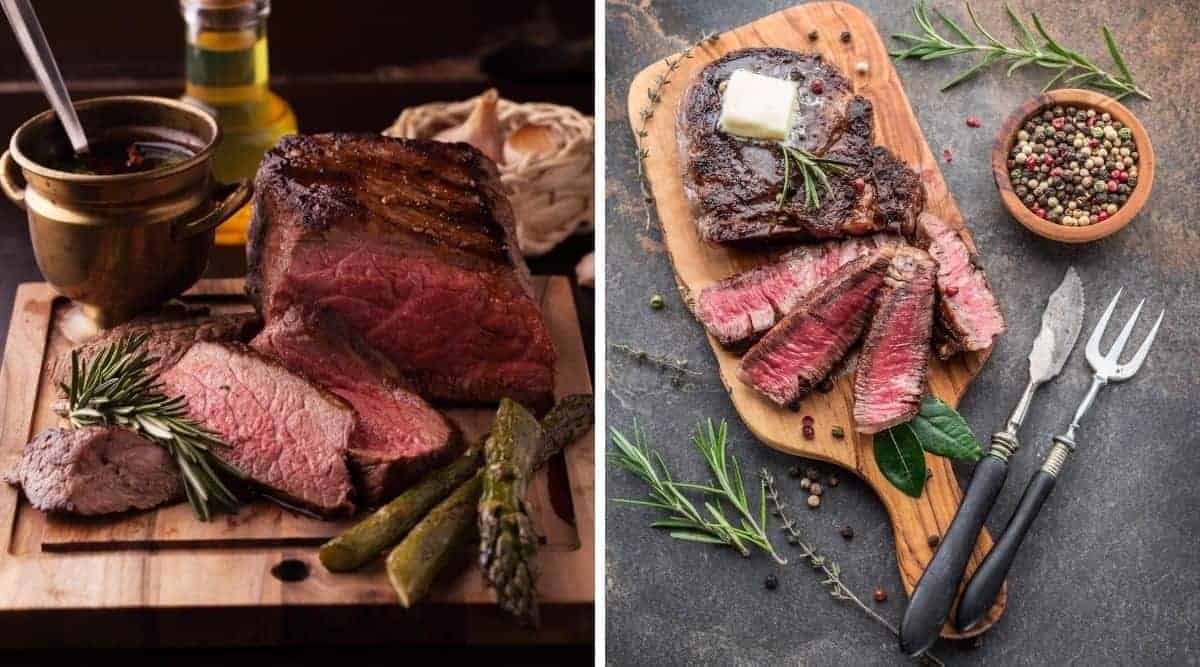
In the great steak debate, the choice between filet mignon and ribeye often boils down to a preference for tenderness or flavor.
Ribeye, known for its rich marbling and intense flavor, caters to those who savor a juicier, more flavorful bite. On the other hand, filet mignon is celebrated for its lean, buttery texture, offering a milder flavor but unparalleled tenderness.
While personal taste ultimately dictates the winner in this showdown, the following article discusses the unique characteristics of these two popular cuts, helping you understand and appreciate their distinctly different qualities.
Read on to discover which steak reigns supreme for your palate – the flavor-packed ribeye or the tender filet mignon.
All set? Let’s ‘meat’ our contestants:
Jump to:
- 1 Comparison Table
- 2 Which Do I Think is Best, Filet Mignon or Ribeye?
- 3 Comparing Filet Mignon to Ribeye
- 3.1 Filet Mignon Brief Overview
- 3.2 Ribeye Brief Overview
- 3.3 Comparing Size, Weight, and Servings per Cut
- 3.4 Fat Content Comparison
- 3.5 Tenderness of Each Cut
- 3.6 Flavor Differences
- 3.7 Texture Differences
- 3.8 Location on the Cow Each Cut Comes From
- 3.9 Preferred Cooking Method for Each Cut
- 3.10 Ease of Cooking
- 3.11 Nutritional Information of Each Cut
- 3.12 Price Comparison
- 4 Where to Buy Filet Mignon Online
- 5 Where to Buy Ribeye Online
- 6 Final Thoughts
Comparison Table
For a bottom line up front, here are the most meaningful differences between these two cuts summarized in an easy-to-read table.
| Aspect | Filet Mignon | Ribeye |
|---|---|---|
| Average Size and Weight | Smaller size, typically 2-3 inches in diameter, weighing 6-8 ounces | Larger size, typically 1.5 inches thick, weighing 12-24 ounces |
| Average Servings Per Cut | Usually serves one person | Can serve one person generously or two if cut |
| Fat Content | Lower fat content, minimal marbling | Higher fat content with significant marbling |
| Tenderness | Extremely tender, considered one of the most tender cuts | Tender, with a bit more chew than filet mignon |
| Flavor | Mild and subtle beef flavor | Rich, beefy flavor enhanced by fat |
| Texture | Fine, buttery texture | Meaty texture with a good chew |
| Location on Cow | From the smaller end of the tenderloin, located along the spine | From the rib section, specifically the top part of the center rib |
| Preferred Cooking Method | Best for quick cooking methods like pan-searing or broiling | Ideal for grilling or broiling, where the fat renders well |
| Ease of Cooking | Requires careful cooking to avoid over-drying; best kept to rare or medium-rare | More forgiving during cooking, fat helps keep the steak juicy |
| Nutritional Information (per 100g) | 190 calories, 8g fat, 28g protein, 75mg cholesterol | 280 calories, 20g fat, 27g protein, 90mg cholesterol |
| Price | Higher price point due to limited quantity per cow and high demand | Generally less expensive than filet mignon, but varies by quality |
Which Do I Think is Best, Filet Mignon or Ribeye?
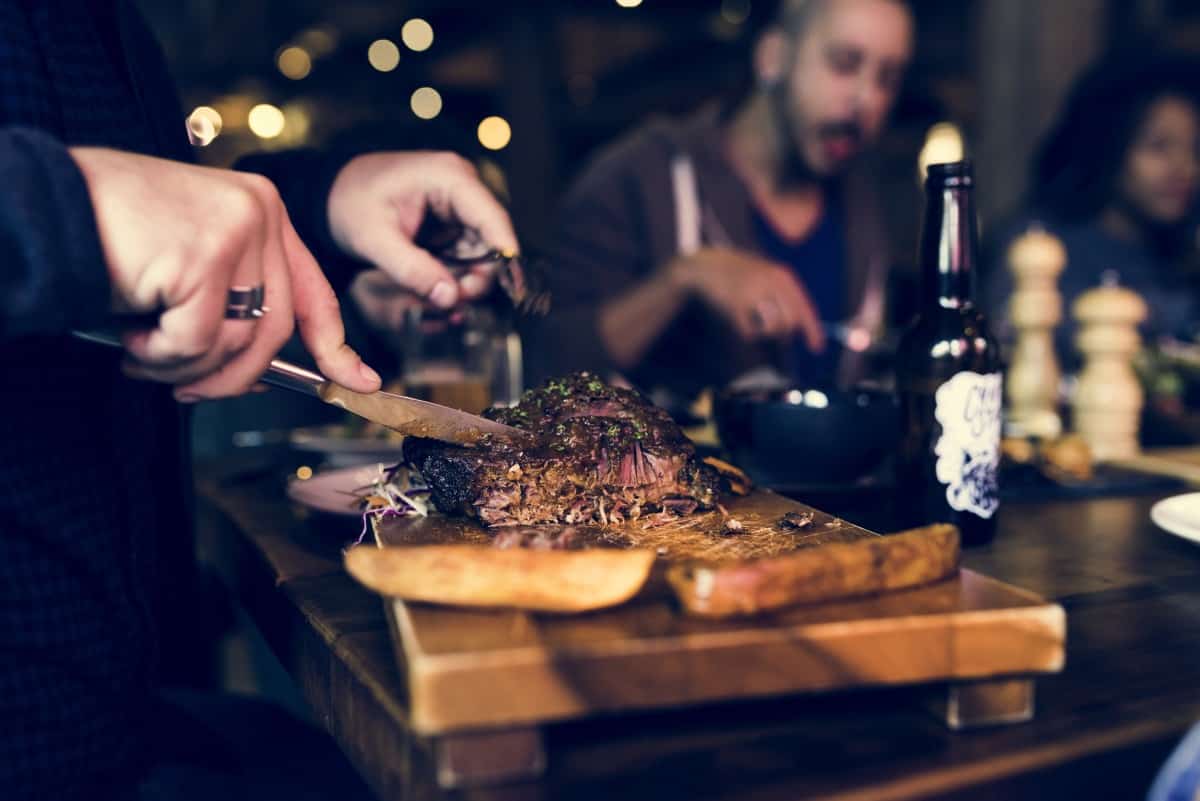
This is a bit like asking which luxury vehicle is best because it largely comes down to personal preference. But, we’re not afraid of a little controversy at FoodFireFriends, so I’m going to pick a winner.
While a filet mignon has a ton of cachet as a luxury cut, ribeye steak tends to be a bigger crowd-pleaser thanks to its more robust flavor profile. You also have more control/options for portion size with ribeye. Additionally, the thinner ribeye typically cooks more easily than a thick filet, and it’s more cost-effective than a pricey filet.
Don’t get me wrong — I love filet mignon! The smaller portion size makes it ideal for including as part of a more substantial meal, and it’s undeniably elegant. Plus, it’s so darn tender!
At the end of the day, though, my hearts and taste buds will choose ribeye over filet more often than not.
When Should You Pick One Over the Other?
Of course, eating either of Filet Mignon or Ribeye can be a truly sublime experience. So, why might you choose filet over ribeye or vice versa?
Serve filet mignon when you want buttery tenderness above all else. And serve ribeye when you wnt a robust beefy flavor above all else.
For a truly gourmet experience, you’d probably go with the filet mignon. Everyone knows and reveres the name — it’s synonymous with fine dining. For very special occasions (or for snooty guests!), you can’t miss with a filet. Pair it with sides that won’t overwhelm its relatively delicate flavor. Or, really sauce it up and make it a flavor extravaganza.
Filet mignon should also be your go-to if you’re planning an evening of French cuisine.
Serve ribeye to your serious beef-o-phile friends who love that big, meaty taste. It’s an excellent choice for a classic backyard barbecue with all the fixings but upgraded for steak lovers.
Comparing Filet Mignon to Ribeye
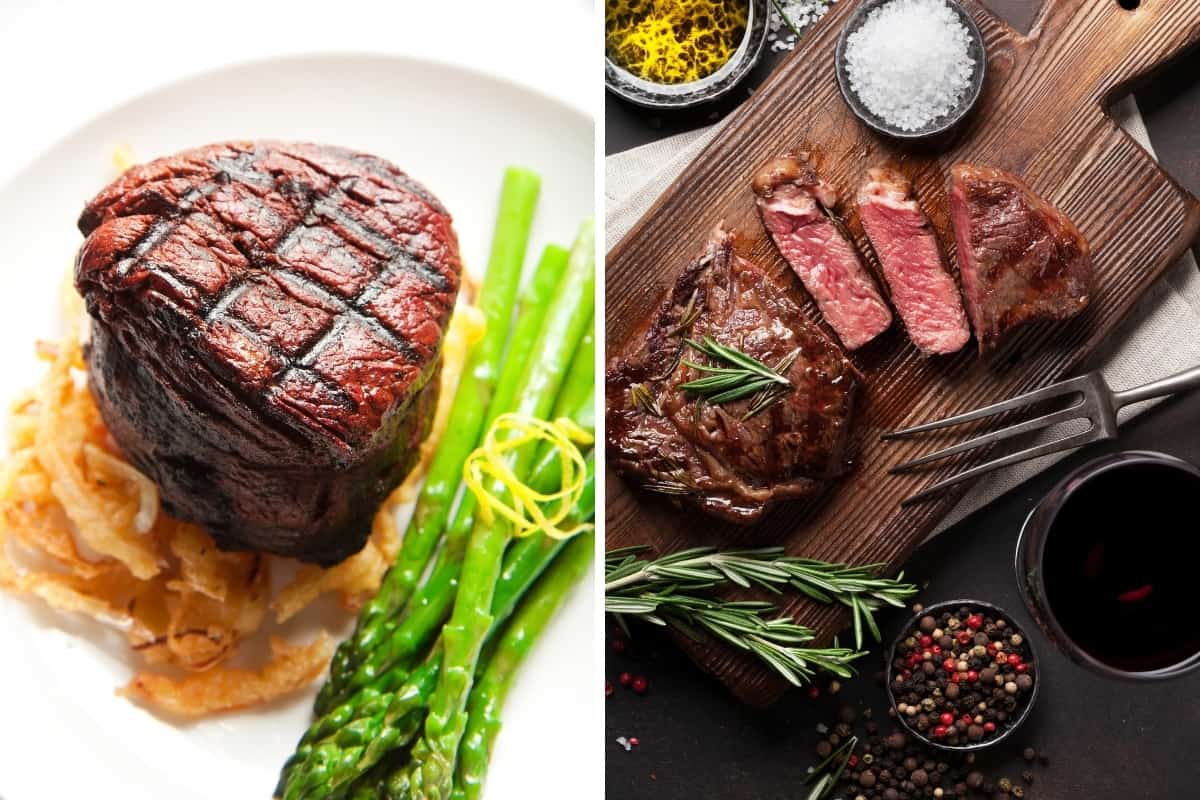
It’s showdown time! How does filet mignon compare to ribeye? How do these two succulent steaks stack up against each other in some important categories? Let’s find out.
Filet Mignon Brief Overview
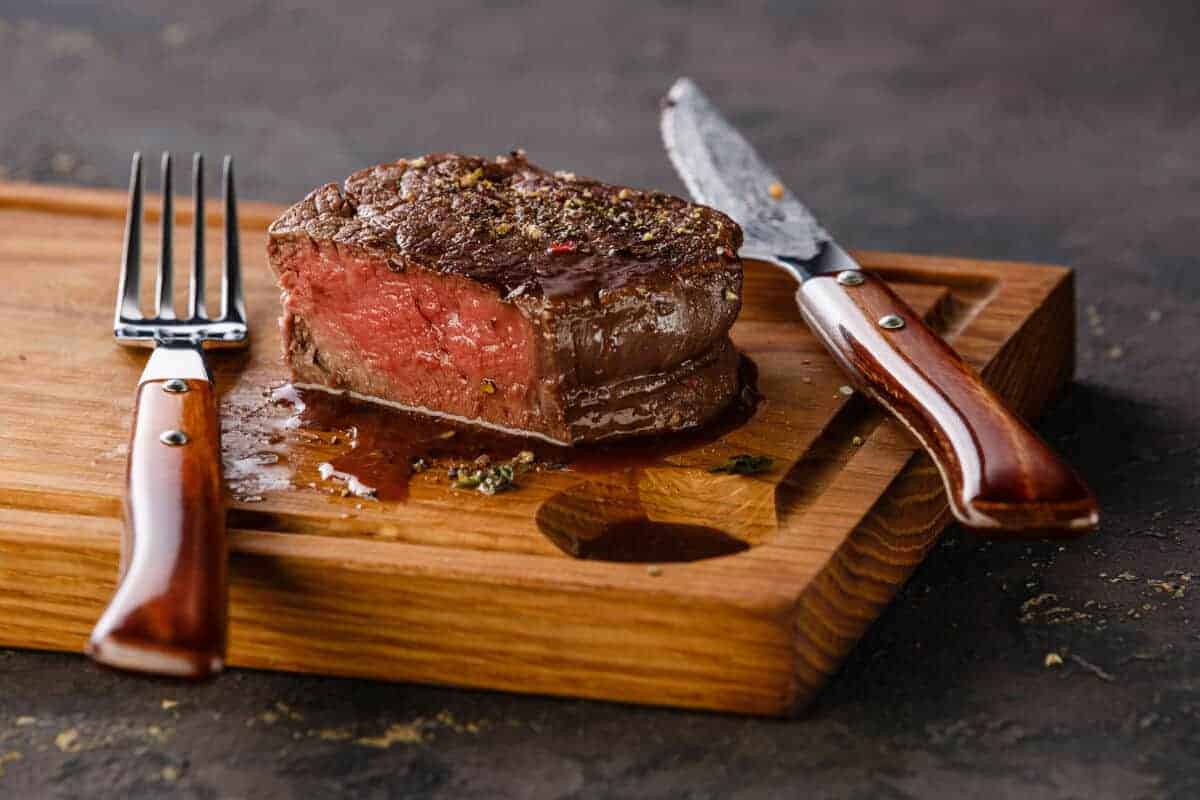
“Filet is beautiful. The texture is great; there’s a great subtle flavor.” — Chef John Manion, El Che Bar, Chicago
The name filet mignon roughly translates to “cute filet,” with filet being a thick, boneless cut of meat and the cut’s small size making it cute.
You might also see it referred to as tournedos, medallions, fillet steak, or tenderloin steak. But doesn’t that French name just elevate its status in your mind?
We can’t be sure when, exactly, the filet was first isolated from the rest of the beef. But, we do know that the term “filet mignon” first appeared in print in a 1906 short story by American author O. Henry. It’s unlikely he coined the term on the spot, but we don’t know where he picked it up.
Filet mignon is noted for being an incredibly tender cut that practically melts in your mouth. In terms of flavor, though, it’s much lighter on the “beefiness” than a ribeye steak. To compensate, you’ll often find filets wrapped in bacon.
Ribeye Brief Overview
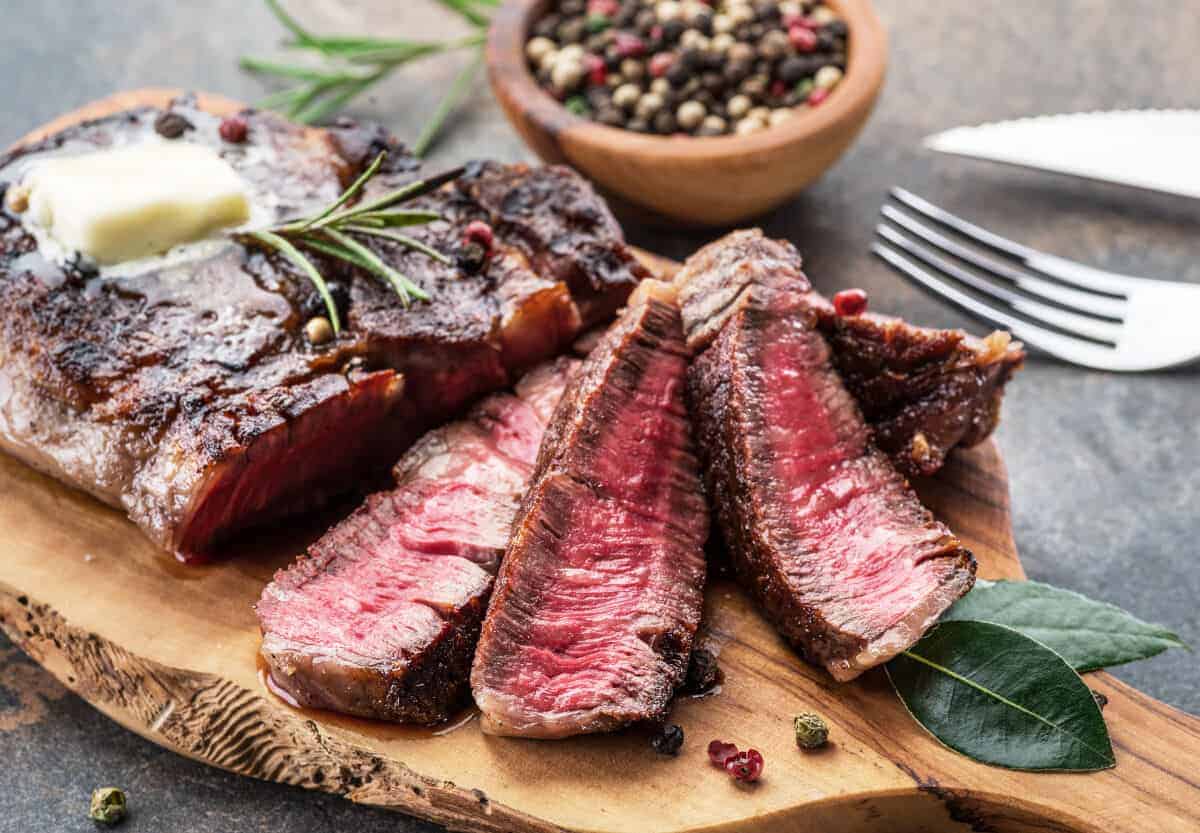
No surprise, the ribeye steak gets its name from the area of the cow from which it’s cut, which is the upper rib section near the spine.
The ribeye steak has all kinds of great nicknames, including Scotch fillet, beauty steak, market steak, Spencer steak, and Entrecôte. Most of those sound better than ribeye, to be honest. Ah well, it is what it is.
Because it’s one of the top steaks for grilling, you’ll find this delicious cut served all over the world, and it’s a particular favorite in steakhouse restaurants. People love it for the full flavor and tenderness.
Cows aren’t big on exercise, but certain parts of the body still get a workout from moving around and supporting such a large animal — the ribeye steak does not come from one of those spots.
“I always thought filet mignon was the steak to beat, but the fat content in a ribeye is fantastic.” — Neil Patrick Harris (I know he’s not a chef, but his husband is.)
Comparing Size, Weight, and Servings per Cut
Filet Mignon is typically smaller, about 2-3 inches in diameter, and weighing 6-8 ounces. This makes it an ideal portion for a single serving.
Ribeye is a larger, heartier option, best cooked and served at a substantial thickness of 1.5 inches, and weighing 12-24 ounces. Its larger size not only makes it perfect for a generous single serving but also large enough to be shared between two if desired.
Fat Content Comparison
The fat content in Filet Mignon and Ribeye is one of the most notable differences between these two cuts. Filet Mignon is renowned for its lean profile, offering minimal fat content and very little marbling. This quality gives it a distinct texture and taste, catering to those who prefer leaner meat.
Ribeye, in contrast, is rich in fat and known for its significant intramuscular fat and marbling. This marbling contributes to its rich flavor and plays a key role in the steak’s juiciness and overall taste experience, making it a favorite for those who enjoy a more flavorful and succulent steak.
Tenderness of Each Cut
There’s really no contest in this department: filet mignon trumps basically all cuts when it comes to tenderness. A well-marbled ribeye is still plenty easy to chew, but it will never achieve that buttery softness that makes filet mignon so popular.
Filet Mignon is at the pinnacle of tenderness, hailed as one of the most tender cuts of steak available, if not the most tender. Its tenderness is due to its origin from a less-used muscle, offering a melt-in-your-mouth eating experience.
Ribeye, while still tender, offers a slightly different texture. It has a bit more chew than Filet Mignon due to where it comes from on the cow and the higher fat marbling content.
Flavor Differences
As with the tenderness, there’s a clear winner when you’re talking taste — this time, though, it’s the ribeye taking first prize.
The muscle that makes up the ribeye gets more of a workout than does the filet, and it has a high fat content and far more marbling. These two factors combined ramp up the robust beefy flavor of the ribeye.
Filet mignon is tasty, but it’s a much tamer experience. It’s known for its subtlety, offers a mild beef flavor that is not overpowering, making it suitable for those who prefer a less intense meaty taste or like to pair their steak with flavorful sauces or sides.
Texture Differences
Filet Mignon has a fine, buttery texture, while Ribeye offers a meatier texture with a good chew.
With its low-fat content, Filet Mignon has a fine, almost butter-like, smooth, and delicate texture. This unique texture adds to its reputation as a premium cut. It is preferred by those who value tenderness over anything else.
Ribeye, on the other hand, offers a different textural experience. Its meaty texture and satisfying chewiness are largely due to its fat content and marbling. This makes Ribeye flavorful and gives it a hearty, more traditional steak texture that many diners who value flavor over tenderness find appealing.
Location on the Cow Each Cut Comes From
The filet is a small portion of a much larger cut. It’s found near the center of the tenderloin, a long muscle that runs along the spine near the back of the cow. You can cut 6–8 filets from a tenderloin.
From this area, we also get Châteaubriand, and the filet is included in a Porterhouse (along with a strip steak).
Filets are smaller than most cuts of beef. They’re cut thick, though, and are basically circular. Picture a hockey puck made of beef, and you’ve got the idea. But, you know, the tastiest hockey puck ever.
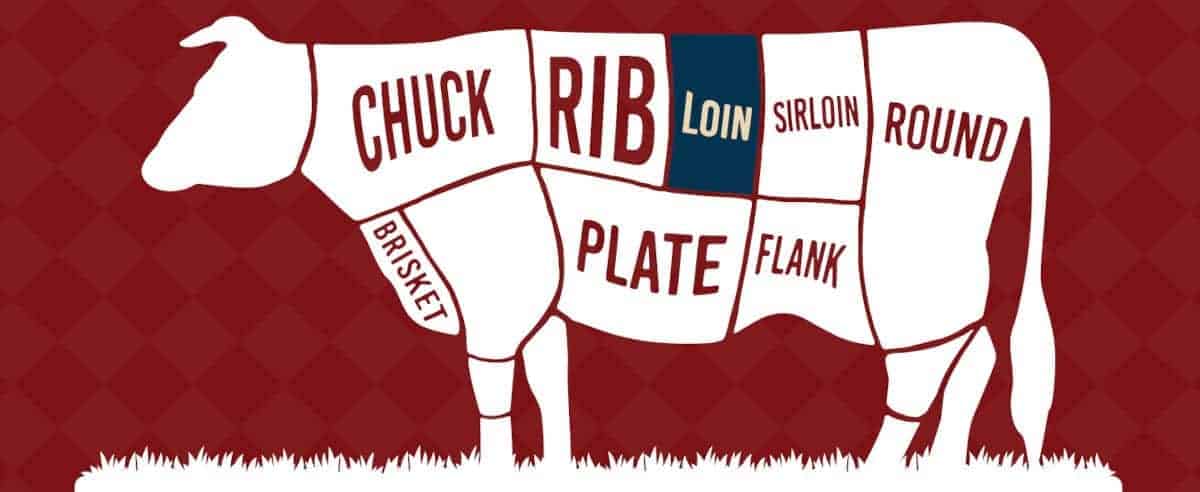
You might guess from the name that ribeye comes from the rib section. Specifically, this lovely piece of meat is cut from the center rib, a zone covering ribs 6 to 12. This is the same area from which butchers cut rib steak and prime rib roast.
You can tell a ribeye steak from a rib steak with ease: a ribeye is boneless, and a rib steak is bone-in. They are large, roughly oval-shaped, and typically show heavy fat marbling.
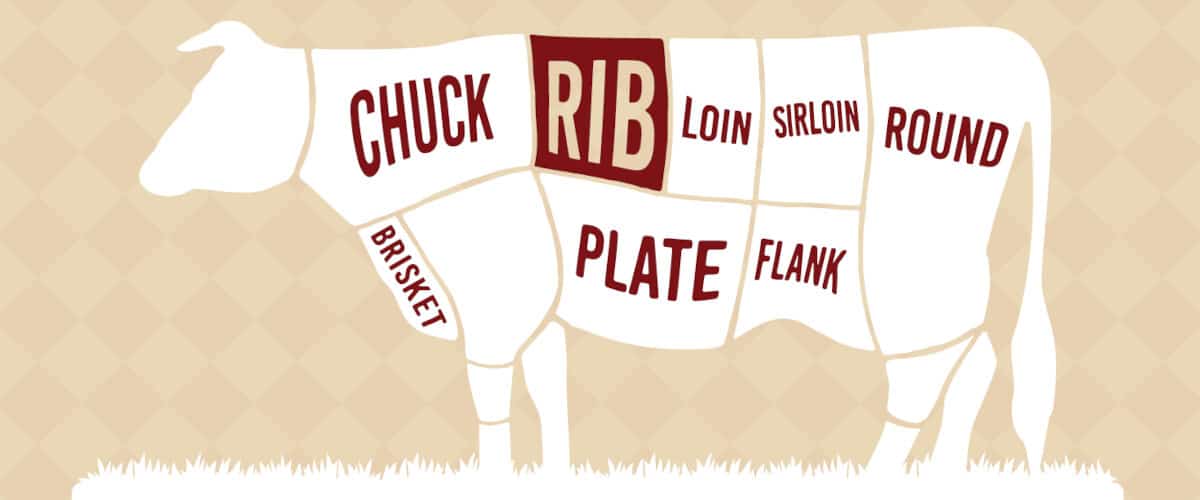
Preferred Cooking Method for Each Cut
The preferred cooking methods for Filet Mignon and Ribeye take advantage of their unique qualities.
It’s best to cook filet mignon using methods like pan-searing or broiling due to its tender and lean nature. These methods allow for a quick cook, ensuring the steak remains tender and does not dry out. The goal is to achieve a slight crust on the outside while maintaining its tenderness inside.
Ribeye, with its higher fat content, is ideally suited for grilling or broiling. These cooking methods render the fat within the Ribeye, enhancing its flavor and juiciness. The fat also helps protect the steak from drying out, making it more forgiving and suitable for various doneness levels.
Ease of Cooking
The ease of cooking for Filet Mignon and Ribeye varies significantly due to their differing fat contents.
Filet Mignon, being a leaner cut, requires more attention during cooking. The key is to avoid overcooking, as it can quickly become dry. Cooking it to rare or medium rare is recommended to preserve its tenderness and moisture.
Ribeye, in contrast, offers a more forgiving cooking experience. Its higher fat content not only contributes to flavor but also aids in keeping the steak juicy and flavorful, even if it’s cooked past medium. This makes Ribeye a more approachable option for those less experienced in cooking steaks.
Nutritional Information of Each Cut
The nutritional profiles of Filet Mignon and Ribeye reflect their differences in fat content and overall composition.
Filet Mignon, being a leaner cut, is lower in calories and fat. based on a 3 oz. serving, it contains about 170 calories, 2.8 grams of saturated fat, and a significant amount of protein at 26 grams, making it a favorable option for those seeking a healthier cut of beef. It also has a relatively lower cholesterol content at 3.8 mg.
On the other hand, Ribeye, with its higher fat content, is richer in calories and fat. It contains approximately 190 calories and 4 grams of saturated fat per 3 oz. serving, 23 grams of protein, and a slightly higher cholesterol level of 76.5 mg. This makes Ribeye more indulgent, offering a richer taste and texture.
Filet Mignon nutritional values:
| Nutrition | Total Amount (Based on 3 oz Serving) | % Daily Value (based on 2000 calories/day) |
|---|---|---|
| Calories | 170 | 9% |
| Saturated Fat | 2.8 g | 15% |
| Protein | 26 g | 52% |
| Iron | 3 mg | 15% |
| Zinc | 3.9 mg | 25% |
Ribeye nutritional values:
| Nutrition | Total Amount (Based on 3 oz Serving) | % Daily Value (based on 2000 calories/day) |
|---|---|---|
| Calories | 190 | 10% |
| Saturated Fat | 4g | 20% |
| Sodium | 60 mg | 3% |
| Protein | 23 g | 46% |
| Iron | 2.2 mg | 10% |
| Zinc | 5 mg | 35% |
Price Comparison
The pricing of Filet Mignon and Ribeye steaks is influenced by availability, demand, and cut quality factors.
I don’t like to give concrete prices because they change constantly and soon become outdated. So I will simply say that Filet Mignon is often at a higher price point due to the limited amount of this cut available from each cow and its high demand due to its tenderness and lean profile. This exclusivity makes it a more premium option.
Ribeye, while generally less expensive than Filet Mignon, can also vary in price. The cost of Ribeye is influenced by factors such as the degree of marbling and the overall quality of the cut. Despite being more affordable than Filet Mignon, Ribeye offers a rich and flavorful experience, making it a highly valued choice for many steak lovers.
Where to Buy Filet Mignon Online
Crowd Cow
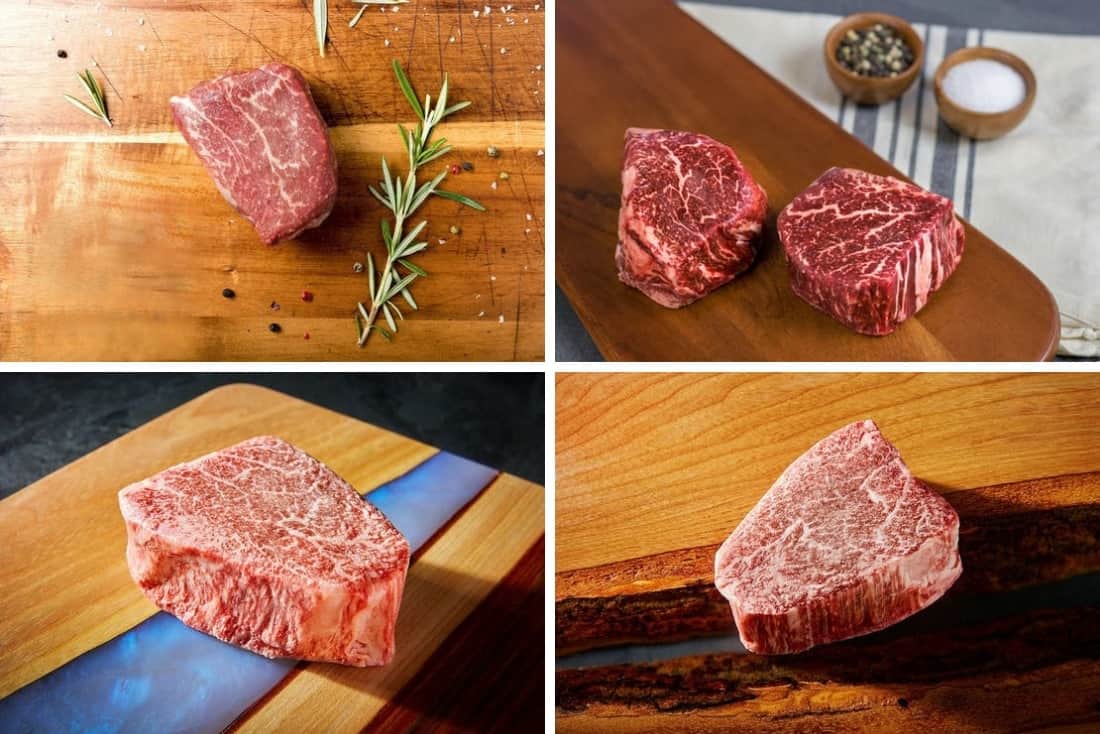
Crowd Cow has a large selection of Filet Mignon cuts from different farms, raised in different ways, and with varying levels of marbling, including:
- Pasture-raised
- 100% grass-fed
- Wagyu cross
- Kagoshima wagyu
- Miyazaki Gyu wagyu
- Kobe beef
They have cuts as affordable as $20, right up to luxurious treats at $180. There’s something for everyone!
Snake River Farms
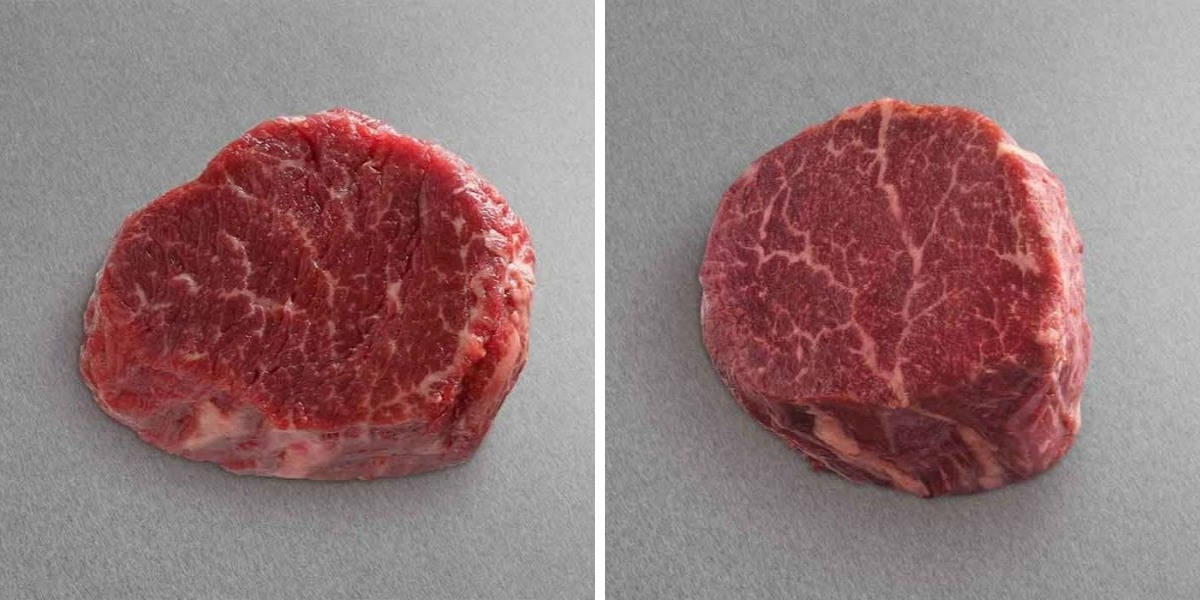
Snake River Farms sell filet mignon from both their American Wagyu ranges, Black and Gold.
The American Wagyu Black grade has more intramuscular fat and marbling than USDA prime and is so fine-grained it can be cut with a fork! Tender and flavorful, they are a real treat and make a perfect meal for a special occasion.
The American Wagyu Gold grade has the highest marbling that Snake River Farms offer, beating out even their ‘Black grade’ steaks for marbling and buttery textured flavor.
These steaks can be bought in sizes ranging from 4 oz to 10 oz, with the 4 oz versions sold in 2-packs.
Check Price on Snake River Farms
Where to Buy Ribeye Online
Ribeye is so popular, you’d be hard pressed to find a meat supplier that doesn’t sell it! That said, here are three of our favorite places who sell it:
Crowd Cow
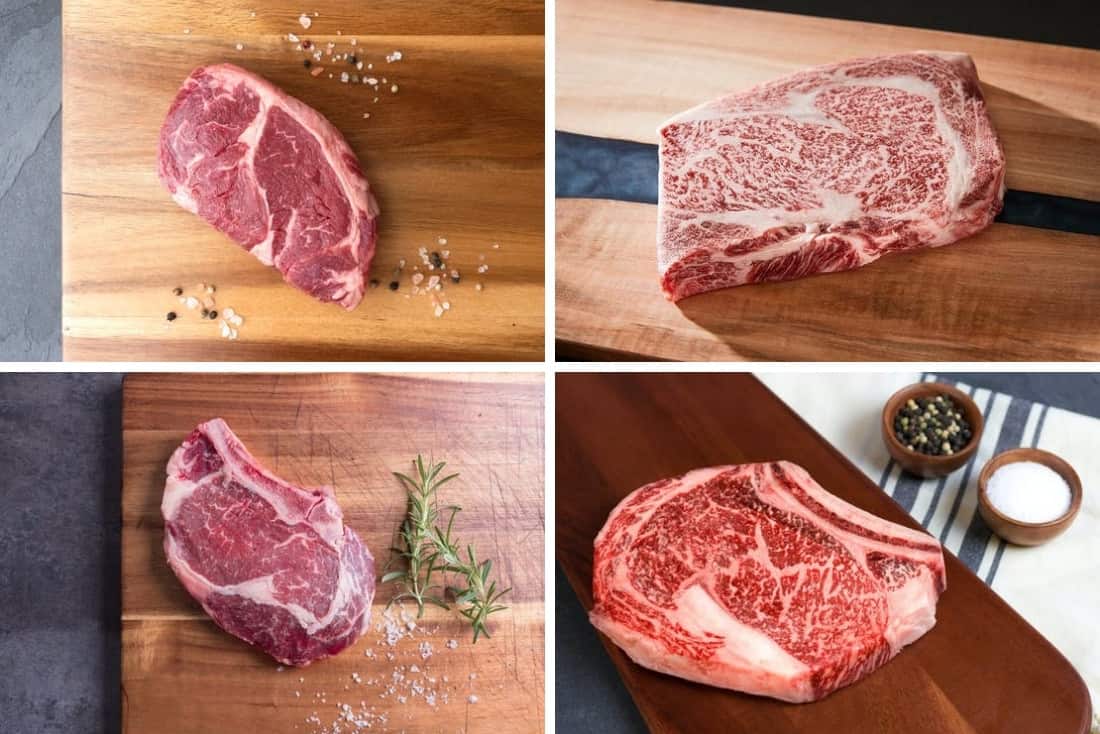
Crowd cow has a wide selection of ribeye steaks, with different amounts of marbling, from different farms and raised in varying ways!
You can choose from:
- Pasture-raised
- 100% grass-fed
- Fullblood Wagyu
- Wagyu cross
And each type can be either bone-in or boneless.
They have steaks competitively priced to suit any budget, so you can choose to be as price-conscious or extravagant as you like.
Porter Road
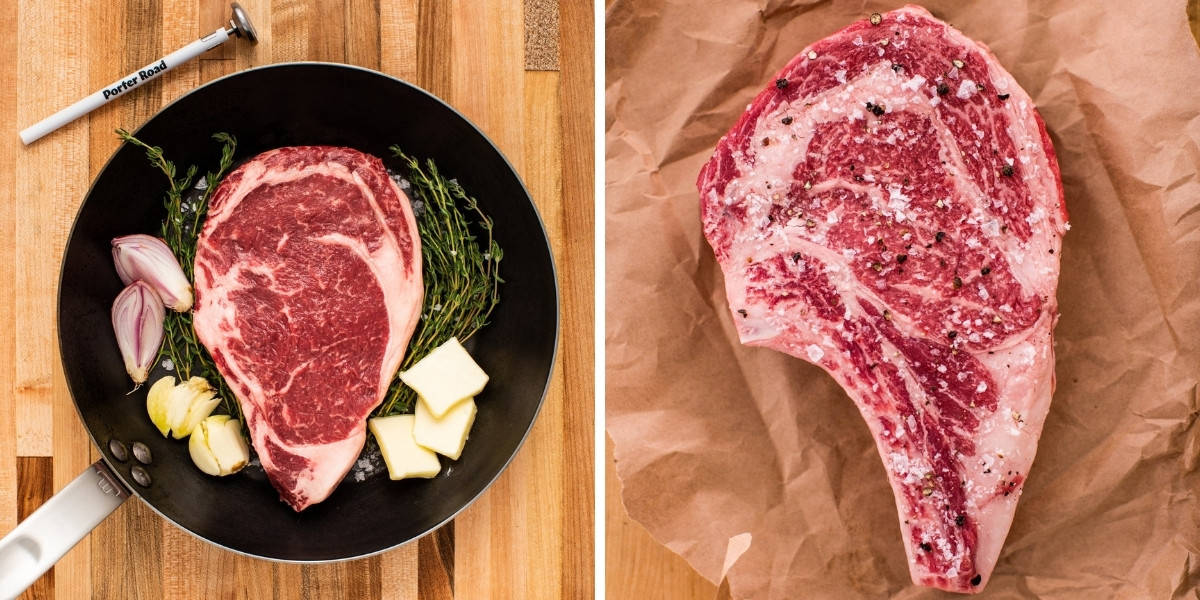
Porter road sells their ribeye either bone-in — weighing 1.19 to 1.31 lbs — or boneless — weighing 0.94 to 1.06 lbs.
The cattle these cuts come from are pasture-raised, hormone and antibiotic-free, and the meat is dry-aged for 14 days to create a deliciously deep umami beef flavor.
This ribeye is well-marbled and has a nice fat cap, resulting in a tender, juicy cut.
Final Thoughts
Sincerely, wasn’t our look at filet mignon vs ribeye the most drool-inducing thing you’ve read today?
Both ribeye and filet mignon offer the griller and diner a very special experience; there’s nothing quite like them hot off the barbecue. Which will be the next to grace your grill?
We hope you found this guide helpful, and that you’re better equipped to not only select a delicious cut of beef but also to grill it to perfection. If you think anything is missing, please let us know, or fire us your unanswered questions.
Thanks for reading and the best of the grill to you!


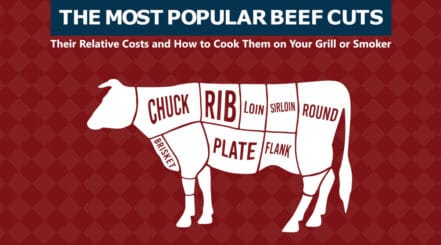
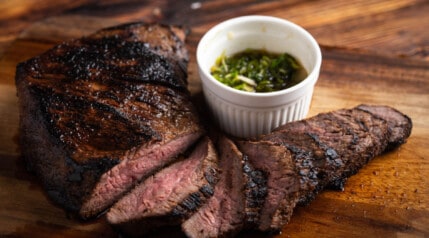

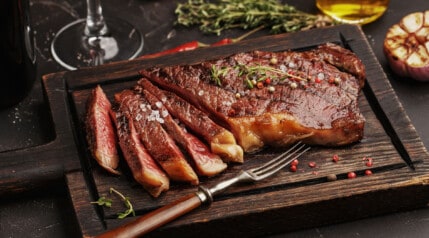
0 Comments